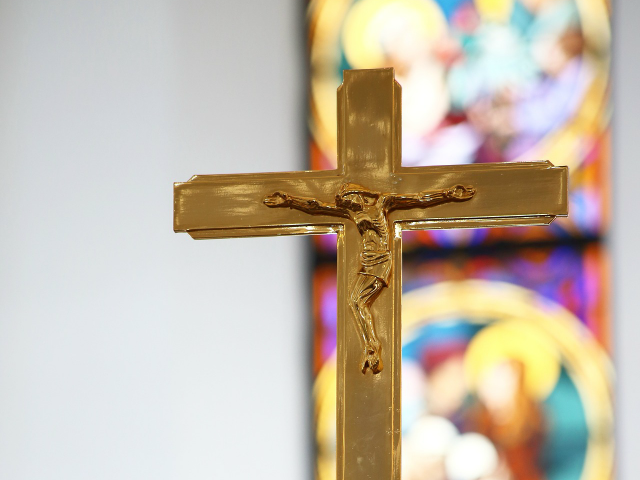The Catholic Church inaugurated its first new church building in 60 years in Cuba Monday, the parish of the Sacred Heart of Jesus in Sandino, a remote village in the westernmost province of Cuba, Pinar del Río.
The new church was a collaborative effort with funding from U.S. Catholics, the design of Cuban architect Magol Valdés Lobán, labor from the local community, and a land grant from the government of Havana.
The parish church, the first built on the island since the Castroist socialist revolution of 1959, will offer a place of worship to the 37 thousand inhabitants of the municipality of Sandino, almost all workers on citrus and tobacco plantations, as well as 4 thousand medical students.
American Catholics, including numerous Cuban exiles, donated 95 thousand dollars for the construction of the ochre-colored church building, which can accommodate some 200 worshipers.
Local Catholics reportedly see the permission to build the church as a sign of a gradual re-opening of the communist regime to religious freedom, after decades of official atheism, persecutions, and strict limits on religious practice.
Some have suggested that the permit was payback to Pope Francis for having brokered a diplomatic deal between Cuba and the Obama administration in 2014. During his visit, Francis refused to acknowledge political prisoners on the island and downplayed human rights abuses that religious believers suffer there.
Three Popes have visited the island: John Paul II in 1998, Benedict XVI in 2012, and Francis in 2015 and 2016.
Based on baptismal records, the Catholic Church estimates that 60 percent of the population is Catholic. It was not until the visit of Pope John Paul II to the island in January 1998 that relations between the Cuban government and the Catholic Church began to thaw.
As part of his visit, Pope John Paul celebrated Mass in José Martí Square in Havana, with close to a million people in attendance.
In his homily during the Mass, the pope challenged Cuba’s communist government by saying that some ideological systems “presumed to relegate religion to the merely private sphere, stripping it of any social influence or importance,” and insisting that “a modern State cannot make atheism or religion one of its political ordinances.”
The Cuban Revolution and Fidel Castro’s rise to power in 1959 witnessed significant anti-Christian persecution in the traditionally Catholic country, with many priests jailed or exiled.
Over the years, the Cuban government has often used Sunday Mass as a weekly venue to arrest “dissidents,” actively targeting Catholics who dare practice in the open, a fact that contributed to a diminished religious practice in the country.
The parish of the Sacred Heart of Jesus is one of the three churches whose construction was authorized by the Cuban government as part of an agreement with the Vatican. One of these, in Havana, has been consecrated but not yet completed, while the third one in Santiago has not begun construction.
Follow Thomas D. Williams on Twitter Follow @tdwilliamsrome

COMMENTS
Please let us know if you're having issues with commenting.